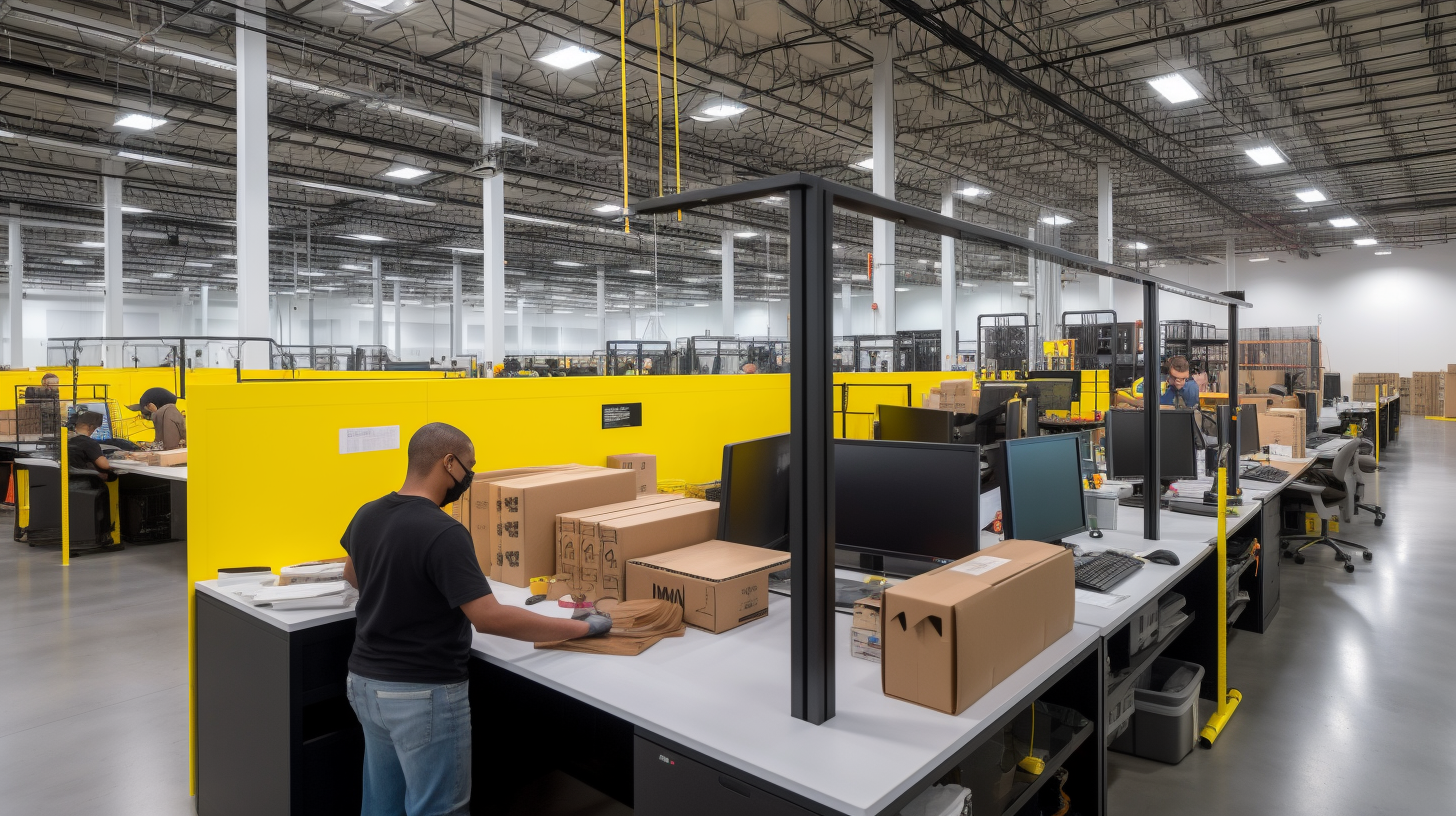As the world of e-commerce continues to grow, so does the demand for fulfillment centers. These centers are responsible for packaging and shipping products to customers in a timely and efficient manner. One issue that has arisen in fulfillment centers is the strain on workers’ bodies from sitting for long periods while processing orders. Standing workstations have become a popular solution to this problem. In this article, we’ll explore the benefits and drawbacks of standing workstations in fulfillment centers and whether they are a viable option for your business.
Introduction to Standing Workstations
Standing workstations are simply desks or workspaces designed for standing rather than sitting. They come in various shapes, sizes, and heights to accommodate different individuals and their working needs. A standing workstation is typically equipped with a footrest, anti-fatigue mat, and an adjustable keyboard tray.
Benefits of Standing Workstations
Improved Health
Standing workstations offer numerous health benefits compared to traditional sitting desks. Sitting for extended periods is associated with a host of health problems, including obesity, back pain, and cardiovascular disease. Standing workstations, on the other hand, can reduce the risk of these ailments and even improve overall health. Standing burns more calories than sitting, improves posture, and promotes better blood circulation.
Increased Productivity
Studies have shown that standing workstations can increase productivity. Standing workers are less likely to become distracted or fall asleep while working. They are also more alert and focused, which leads to increased work output.
Ergonomic Design
Standing workstations are designed with ergonomics in mind. They feature adjustable height options, so workers can customize their workspace to fit their individual needs. This can help reduce strain on the back, neck, and shoulders caused by awkward sitting positions.
Cost-Effective
Standing workstations are cost-effective compared to traditional sitting desks. They require no electricity, and their simple design means less maintenance and fewer parts that need replacement.
Drawbacks of Standing Workstations
Fatigue and Discomfort
Standing for long periods can cause fatigue and discomfort, especially if the worker is not used to it. The stress on the feet, legs, and back muscles can result in aches and pains that can affect work output.
Reduced Flexibility
Standing workstations can limit flexibility compared to traditional sitting desks. Workers may not be able to lean back or change positions as easily, which can reduce comfort and cause stress on the lower back.
Not Suitable for Everyone
Standing workstations may not be suitable for everyone, especially those with certain medical conditions or disabilities. Workers with varicose veins, arthritis, or back problems may find standing for long periods uncomfortable or even painful.
Standing Workstations in Fulfillment Centers
Standing workstations are becoming increasingly popular in fulfillment centers. They are seen as a solution to the strain that sitting for long periods can put on workers’ bodies. In addition, standing workstations can increase efficiency by allowing workers to move around more easily and stay alert.
Conclusion
Standing workstations offer numerous benefits, including improved health, increased productivity, ergonomic design, and cost-effectiveness. However, they also have some drawbacks, such as fatigue and discomfort, reduced flexibility, and unsuitability for certain individuals. When considering standing workstations for your fulfillment center, it’s important to weigh the pros and cons carefully and make an informed decision that meets your business needs and prioritizes worker health and comfort.
Frequently Asked Questions
Are standing workstations expensive?
Standing workstations are typically more cost-effective than traditional sitting desks because they require less maintenance and replacement parts.
How long can workers stand at a standing workstation?
Workers should be encouraged to take breaks and change positions regularly. Standing for more than two hours without a break can lead to fatigue.







